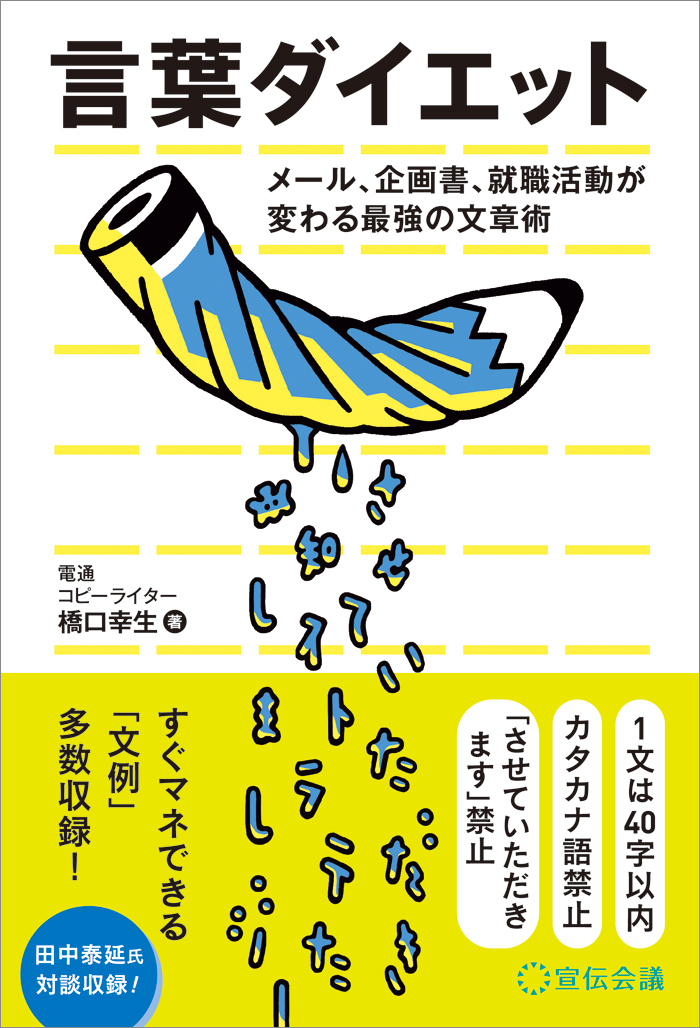Is your proposal turning into "proposal literature"?
Launch PowerPoint and start typing in text.
I think many people create proposals this way. This is an absolutely terrible mistake you must never make.
You can spot a proposal written by someone who starts typing directly into PowerPoint immediately.
- Abnormally long sentences
- Repetitions are frequent
- Katakana terms are used excessively
For example, sentences like this:
To cultivate conversation among the target audience, we drive engagement with impactful solutions and deliver key messages.
This is "proposal literature." Most proposals in the world are written in this difficult-to-read style.
If you start typing directly into PowerPoint, you'll end up tracing the template of proposal literature, resulting in a similar, hard-to-read proposal.
Say goodbye to convoluted, hard-to-read proposal literature and write concisely. I call this writing technique "word diet."
This article introduces how to create easy-to-read proposals using "Word Diet."
Make a rough draft
No manga artist starts drawing comics with a pen right away, right? First, they sketch with a pencil, then ink over it.
Business professionals are no different. PowerPoint is ultimately just for polishing the final presentation look. Before opening PowerPoint, you must solidify your content with a draft.
It doesn't matter how you draft. Word, iPhone Notes, sticky notes, or even just imagining it in your head (I often do this while commuting) are all fine. Choose whatever works best for you.
First, list out what you want to convey. Then, prioritize the list and decide on the overall flow. Only after completing these steps are you allowed to open PowerPoint.
It's not a "summary." It's a "story."
The most important thing in "how to write text" for proposals is
- Ban "I will do"
- Avoid using katakana words
- Avoid using modifiers
- Write only concrete details
...among other points. For details, please refer to Part 2 and Part 3 of this series. This article explains the "content" of a proposal document, which comes before the writing style.
Fundamentally, a proposal document is created for the purpose of making a proposal. According to the Daijirin dictionary, a proposal means "to present a motion or idea." Roughly speaking, "This is what I think!" is a proposal.
However, many proposals end up being "I 'also' think this!" They don't convey the author's own thoughts but instead try to anticipate the reader's perspective with "I get it~".
For example, even in copywriting work, the bigger the competitive presentation, the more likely the proposal becomes one that "guesses the client's thoughts." From the recipient's perspective, this offers no new discoveries and is extremely boring.
When creating a proposal, focus on writing a "story," not just a "summary of the client's brief" or a "summary of the market situation." If you think of it as a story, your ideas will naturally flow in, creating content that captures the reader's interest.
Consider the following example. It's a proposal from an ad agency to a sneaker manufacturer for a sales promotion campaign.
BEFORE:
Your sneakers target teenagers. The school enrollment season is a busy period, so increased demand is expected. It's crucial to communicate through media that aligns with young people's lifestyles. There isn't a single piece of information here the client doesn't already know. If two or three slides like this followed, you'd be completely bored.
The following text transforms this simple "summary" into a "story."
AFTER:
Your sneakers target teenagers. The school enrollment season is a busy period, so increased demand is expected. However, for the teenagers themselves, the busy season doesn't matter. They buy sneakers simply because they need them to enjoy their youth. In communication too, it's crucial to choose media that aligns with young people's real lives. What do you think? Even if the media plan proposed later contains the same content, the impression changes completely. That's because there's thought from the writer and a story there.
Bring your authentic self to business.
What if they dislike me...? Such excessive worry leads to the mass production of lengthy, hard-to-read proposal documents. Lately, every time a slide advances,
"I'll move on to the next slide now,"
before moving on.
But proposals are fundamentally about asserting yourself. Be yourself and convey your thoughts. Make it a story, not just a summary. That way, you'll be able to write readable proposals while enjoying the process.
If you're interested in other know-how for creating proposals, please consider reading my book, "Word Diet."





